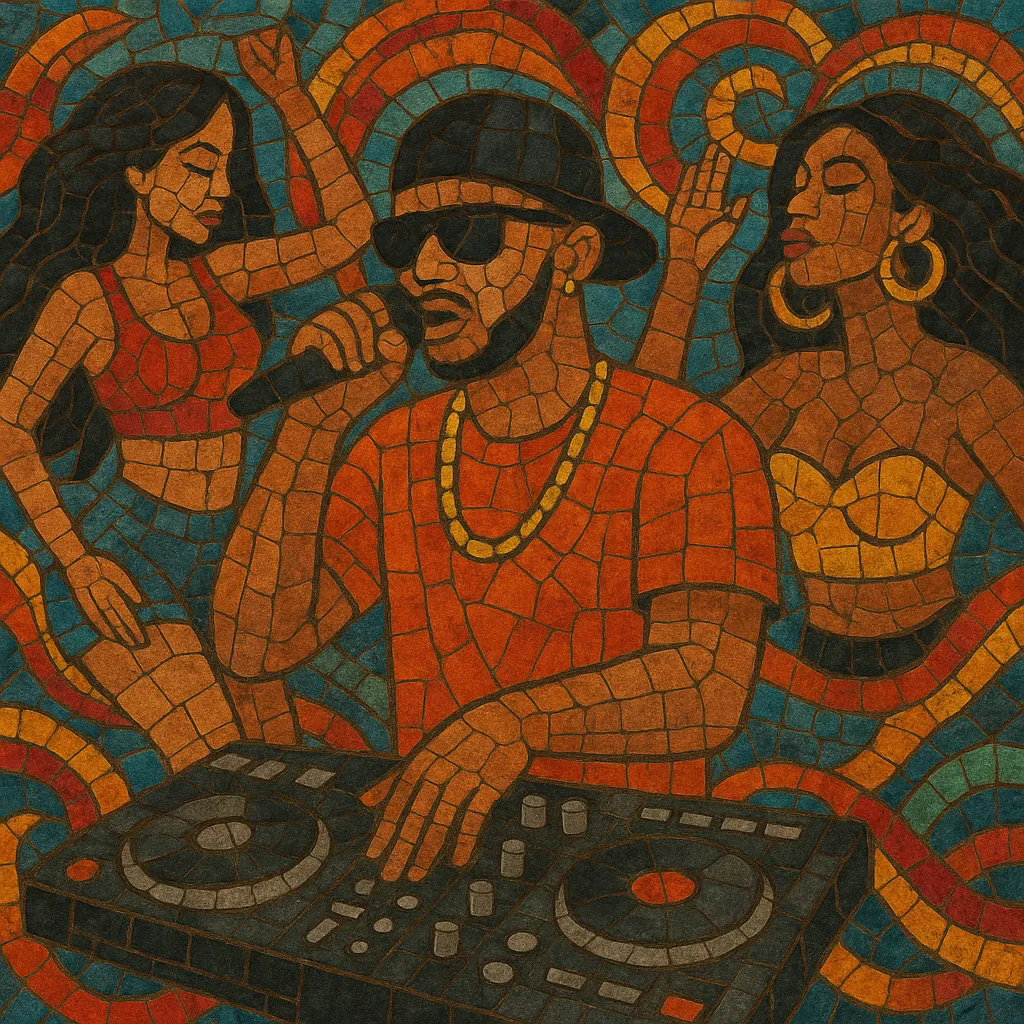Reggaeton is a contemporary urban dance music that blends the dembow rhythm of Jamaican dancehall with hip hop’s MC culture and Caribbean–Latin melodic sensibilities. Its hallmark is the propulsive, syncopated “dembow” drum pattern, typically around 85–100 BPM (often felt in half-time), which powers energetic verses and catchy, sung hooks.
Lyrically, reggaeton is most often in Spanish or Spanglish and centers on dance, nightlife, flirtation, romance, and street life, with a performance style that alternates between rapped bars and melodic chorus lines. Production emphasizes tight, punchy drums, rolling 808 sub-bass, percussive plucks or stabs, and bright, hook-forward toplines—crafted for the club and tailored for crowd participation and perreo.
Reggaeton’s roots trace to Panama’s reggae en español movement, where Jamaican dancehall and reggae were interpreted in Spanish. Meanwhile, in Puerto Rico during the early-to-mid 1990s, DJs and MCs fused dancehall’s dembow rhythm with hip hop’s flows on underground mixtapes (notably DJ Playero’s), performed at parties and clandestine clubs. This emerging sound—initially called "underground"—absorbed local Afro–Puerto Rican traditions like bomba and plena while keeping the Caribbean dancehall backbone.
By the early 2000s, artists such as Daddy Yankee, Tego Calderón, Ivy Queen, Don Omar, and Wisin & Yandel took reggaeton from the underground to international charts. The 2004 hit "Gasolina" became a global touchstone, introducing the dembow to mainstream audiences. Albums and compilations spread the sound across Latin America, the U.S. Latin market, and Europe, while Cuba’s scene developed its own variant (cubaton).
In the 2010s, streaming platforms accelerated reggaeton’s global reach. A newer wave—J Balvin, Bad Bunny, Ozuna, Karol G, Nicky Jam (resurgent)—blended reggaeton with pop, trap, R&B, and Afro-Caribbean rhythms. Subcultures and derivatives proliferated (neoperreo, regional scenes like reggaetón mexicano and reggaetón chileno), and crossovers with EDM birthed moombahton. The dembow pulse became a universal club lingua franca, influencing pop worldwide while retaining its Puerto Rican–Caribbean identity.
The genre’s enduring core is the dembow groove: a syncopated, tension-and-release engine that supports rap-sung delivery and hook-centric songwriting. This template continues to evolve through production innovation (808 design, vocal processing) and cross-genre collaborations while remaining synonymous with dance-floor energy and perreo culture.


